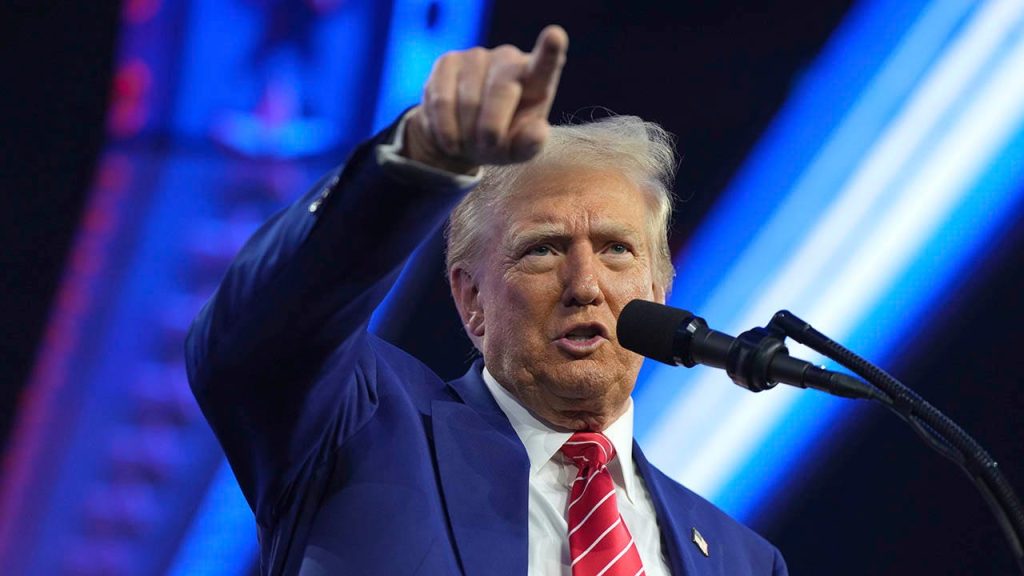Donald Trump, in a recent address at AmericaFest in Arizona, reiterated his commitment to banning transgender athletes from women’s sports and implementing policies restricting transgender rights. He pledged to sign executive orders on his first day in office, if re-elected, to “end child mutilation,” remove transgender individuals from the military and schools, and solidify the recognition of only two genders: male and female. This stance reflects a broader conservative movement pushing back against transgender inclusion, particularly in sports, and framing it as a matter of fairness and protecting women’s spaces. Trump’s repeated pronouncements on this issue, dating back to his 2024 campaign launch, highlight his intent to make it a defining feature of his potential second term.
The debate surrounding transgender participation in sports has become increasingly polarized, with Trump positioning himself as a staunch defender of traditional gender binaries. He argues that allowing transgender women to compete in women’s sports creates an uneven playing field, potentially displacing cisgender female athletes and compromising the integrity of women’s competitions. This perspective resonates with many who believe that biological differences between males and females create an inherent advantage for transgender women, even with hormone therapy. The issue has become a rallying point for conservative voters and a focal point of the culture wars.
Opponents of Trump’s stance argue that his policies are discriminatory and harmful to transgender individuals, denying them equal opportunities and reinforcing harmful stereotypes. They emphasize that transgender women are women and deserve the same rights and protections as cisgender women, including the right to participate in sports. Furthermore, they point to the International Olympic Committee and other sporting bodies that have developed guidelines for transgender inclusion, suggesting that a blanket ban is unnecessary and discriminatory. Advocates for transgender rights also highlight the potential psychological and emotional harm caused by exclusionary policies, particularly for young transgender athletes.
The issue is further complicated by the varying regulations regarding transgender participation in sports at different levels of competition, from high school to professional leagues. Some states have already enacted laws banning or restricting transgender participation, while others have more inclusive policies. The NCAA, for example, has faced legal challenges and criticism from both sides of the issue as it navigates the complex landscape of transgender inclusion in college sports. Trump’s proposed executive orders would likely create further legal challenges and potentially conflict with existing state and organizational policies, leading to a complex and protracted legal battle.
Trump’s emphasis on this issue aligns with his broader populist appeal and his tendency to tap into cultural anxieties. By presenting himself as a protector of women’s sports and traditional values, he aims to mobilize his base and frame the debate in stark terms. This strategy has proven effective in the past, and his repeated pronouncements on transgender issues suggest he sees it as a winning political issue. However, this approach also risks further marginalizing and stigmatizing transgender individuals, exacerbating existing societal divisions.
The future of transgender inclusion in sports, and more broadly, the recognition and protection of transgender rights, remains uncertain. Trump’s pronouncements signal a potential rollback of existing policies and a more restrictive approach at the federal level. The ensuing legal battles and societal debates will likely continue for years to come, with the potential for significant consequences for transgender individuals and the broader landscape of gender rights in the United States. The outcome of these debates will shape not only the future of sports but also the broader societal understanding and acceptance of transgender identities.

